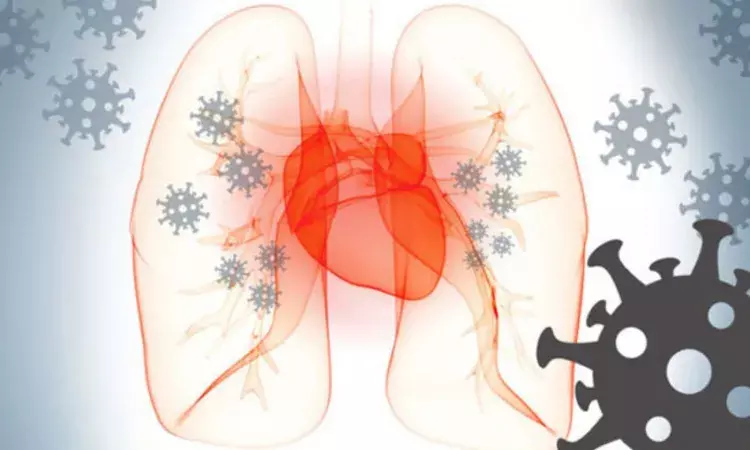- Home
- Medical news & Guidelines
- Anesthesiology
- Cardiology and CTVS
- Critical Care
- Dentistry
- Dermatology
- Diabetes and Endocrinology
- ENT
- Gastroenterology
- Medicine
- Nephrology
- Neurology
- Obstretics-Gynaecology
- Oncology
- Ophthalmology
- Orthopaedics
- Pediatrics-Neonatology
- Psychiatry
- Pulmonology
- Radiology
- Surgery
- Urology
- Laboratory Medicine
- Diet
- Nursing
- Paramedical
- Physiotherapy
- Health news
- Fact Check
- Bone Health Fact Check
- Brain Health Fact Check
- Cancer Related Fact Check
- Child Care Fact Check
- Dental and oral health fact check
- Diabetes and metabolic health fact check
- Diet and Nutrition Fact Check
- Eye and ENT Care Fact Check
- Fitness fact check
- Gut health fact check
- Heart health fact check
- Kidney health fact check
- Medical education fact check
- Men's health fact check
- Respiratory fact check
- Skin and hair care fact check
- Vaccine and Immunization fact check
- Women's health fact check
- AYUSH
- State News
- Andaman and Nicobar Islands
- Andhra Pradesh
- Arunachal Pradesh
- Assam
- Bihar
- Chandigarh
- Chattisgarh
- Dadra and Nagar Haveli
- Daman and Diu
- Delhi
- Goa
- Gujarat
- Haryana
- Himachal Pradesh
- Jammu & Kashmir
- Jharkhand
- Karnataka
- Kerala
- Ladakh
- Lakshadweep
- Madhya Pradesh
- Maharashtra
- Manipur
- Meghalaya
- Mizoram
- Nagaland
- Odisha
- Puducherry
- Punjab
- Rajasthan
- Sikkim
- Tamil Nadu
- Telangana
- Tripura
- Uttar Pradesh
- Uttrakhand
- West Bengal
- Medical Education
- Industry
High-resolution cardiac MRI may detect myocardial injuries after COVID-19 infection: Study

France: An accelerated HR-LGE technique can help diagnose COVID-related myocardial injuries, a recent study has found. According to the study, published in the European Journal of Radiology, undersampled free-breathing isotropic HR-LGE versus the conventional breath-held LR-LGE detected additional areas of late enhancement.
"The method allows for detailed characterization of myocardial injuries in acceptable scan times among patients with a history of COVID-19 infection without the need for repeated breath holds," the researchers wrote.
Late gadolinium enhancement (LGE) is a standard tool in cardiac MRI, widely used for diagnosing various myocardial diseases, primarily by detecting injured areas in the heart muscle. For instance, LGE can diagnose heart attacks. Previous studies have shown high-resolution free-breathing late gadolinium enhancement (HR-LGE) to be valuable for the diagnosis of acute coronary syndromes with non-obstructed coronary arteries. This implies that the method might be useful for detecting COVID-related myocardial injuries but is hampered by prolonged acquisition times.
Against the above background, Aurélien Bustin, Groupe Hospitalier Sud, CHU Bordeaux, Pessac, France, and colleagues aimed to introduce an accelerated HR-LGE technique for the diagnosis of COVID-related myocardial injuries.
To work towards their goal, Bustin and the team developed an undersampled navigator-gated HR-LGE (acquired resolution of 1.25mm3) sequence combined with advanced patch-based low-rank reconstruction and validated it in a phantom and in 23 patients with structural heart disease (test cohort; 15 men; 55±16 years).
Twenty patients with laboratory-confirmed COVID-19 infection associated with troponin rise (COVID cohort; 15 men; 46±24 years) prospectively underwent cardiovascular magnetic resonance (CMR) with the proposed sequence. Image sharpness, quality, signal intensity differences, and diagnostic value of free-breathing HR-LGE were compared against conventional breath-held low-resolution LGE (LR-LGE, voxel size 1.8x1.4x6mm).
The research yielded the following findings:
· Structures sharpness in the phantom showed no differences with the fully sampled image up to an undersampling factor of x3.8.
· In patients (N=43), this acceleration allowed for acquisition times of 7min21s±1min12s at 1.25mm3 resolution.
· Compared with LR-LGE, HR-LGE showed higher image quality and comparable signal intensity differences.
· In patients with structural heart disease, all LGE-positive segments on LR-LGE were also detected on HR-LGE (80/391) with 21 additional enhanced segments visible only on HR-LGE (101/391).
· In 4 patients with COVID-19 history, HR-LGE was definitely positive while LR-LGE was either definitely negative (1 microinfarction and 1 myocarditis) or inconclusive (2 myocarditis).
The researchers concluded, "In patients with a history of COVID-19 infection associated with troponin rise, the method allows for detailed characterization of myocardial injuries in acceptable scan times and without the need for repeated breath holds."
Reference:
The study titled, "High-resolution Free-breathing Late Gadolinium Enhancement Cardiovascular Magnetic Resonance to Diagnose Myocardial Injuries Following COVID-19 Infection," is published in the European Journal of Radiology.
DOI: https://www.ejradiology.com/article/S0720-048X(21)00441-1/fulltext
Dr Kamal Kant Kohli-MBBS, DTCD- a chest specialist with more than 30 years of practice and a flair for writing clinical articles, Dr Kamal Kant Kohli joined Medical Dialogues as a Chief Editor of Medical News. Besides writing articles, as an editor, he proofreads and verifies all the medical content published on Medical Dialogues including those coming from journals, studies,medical conferences,guidelines etc. Email: drkohli@medicaldialogues.in. Contact no. 011-43720751


